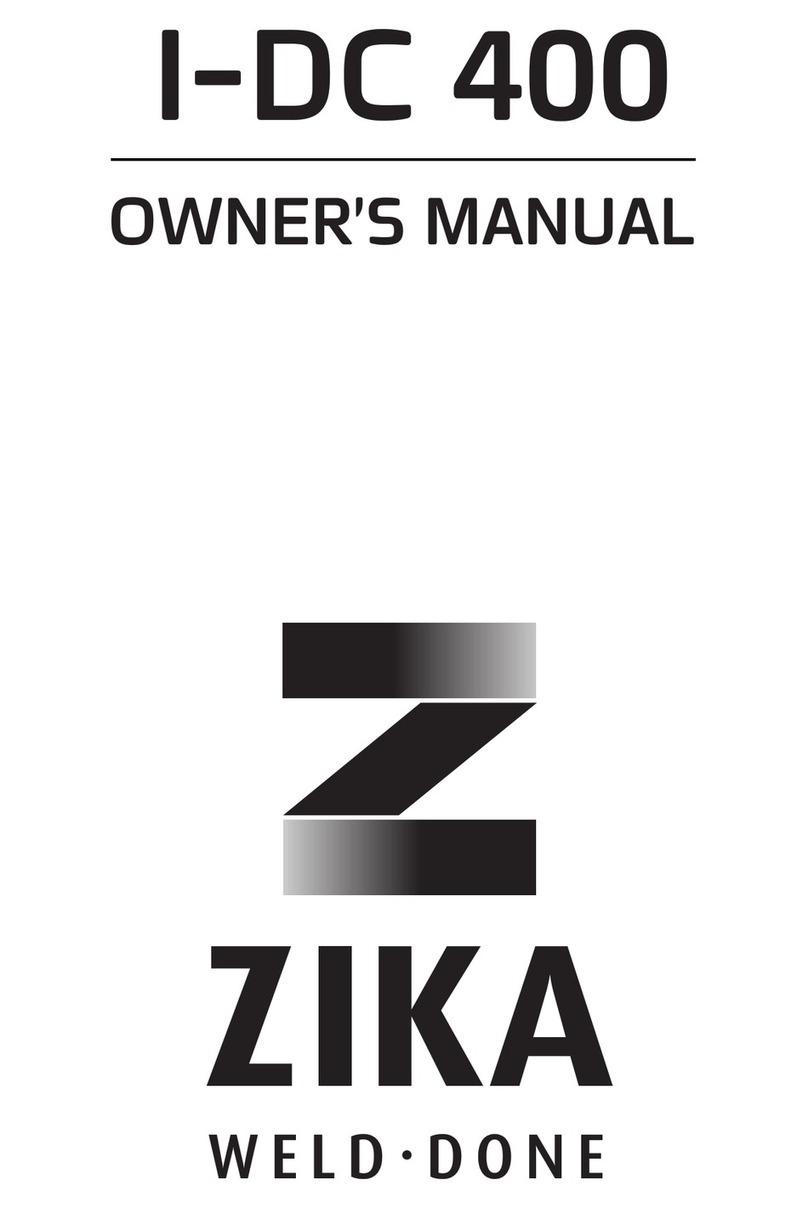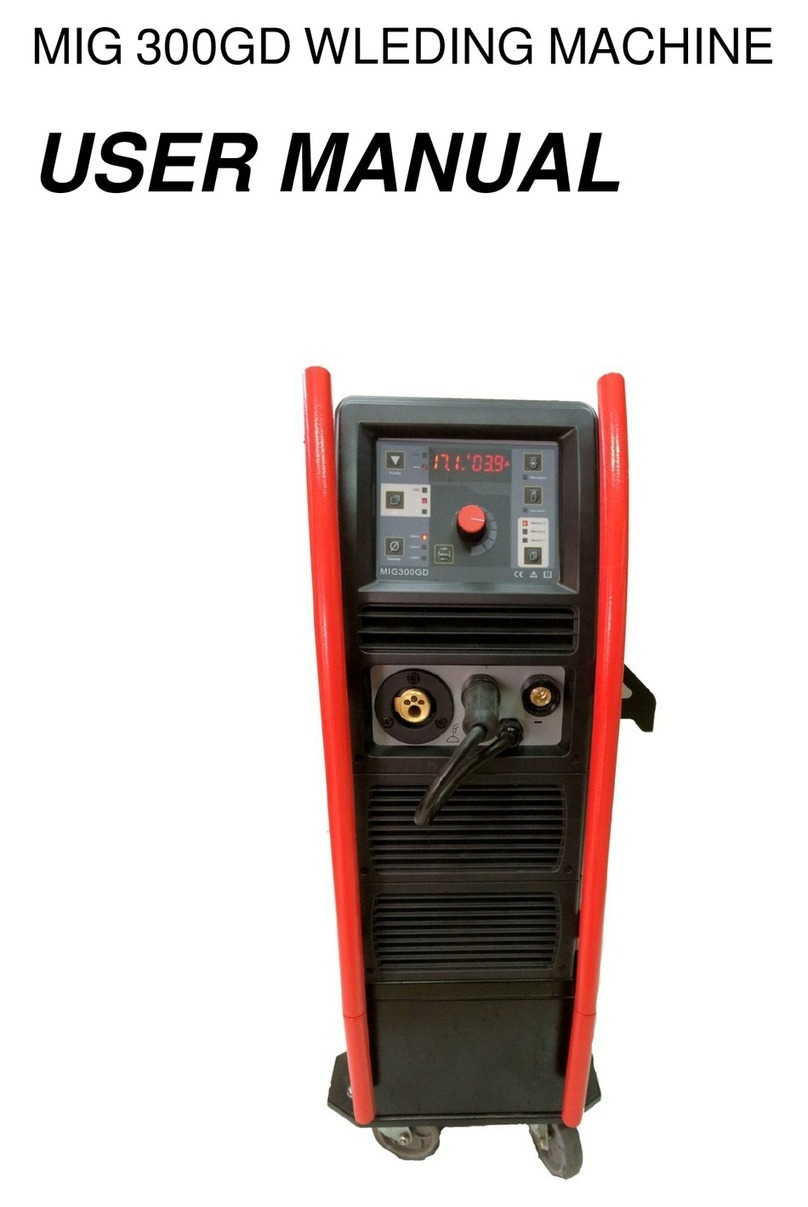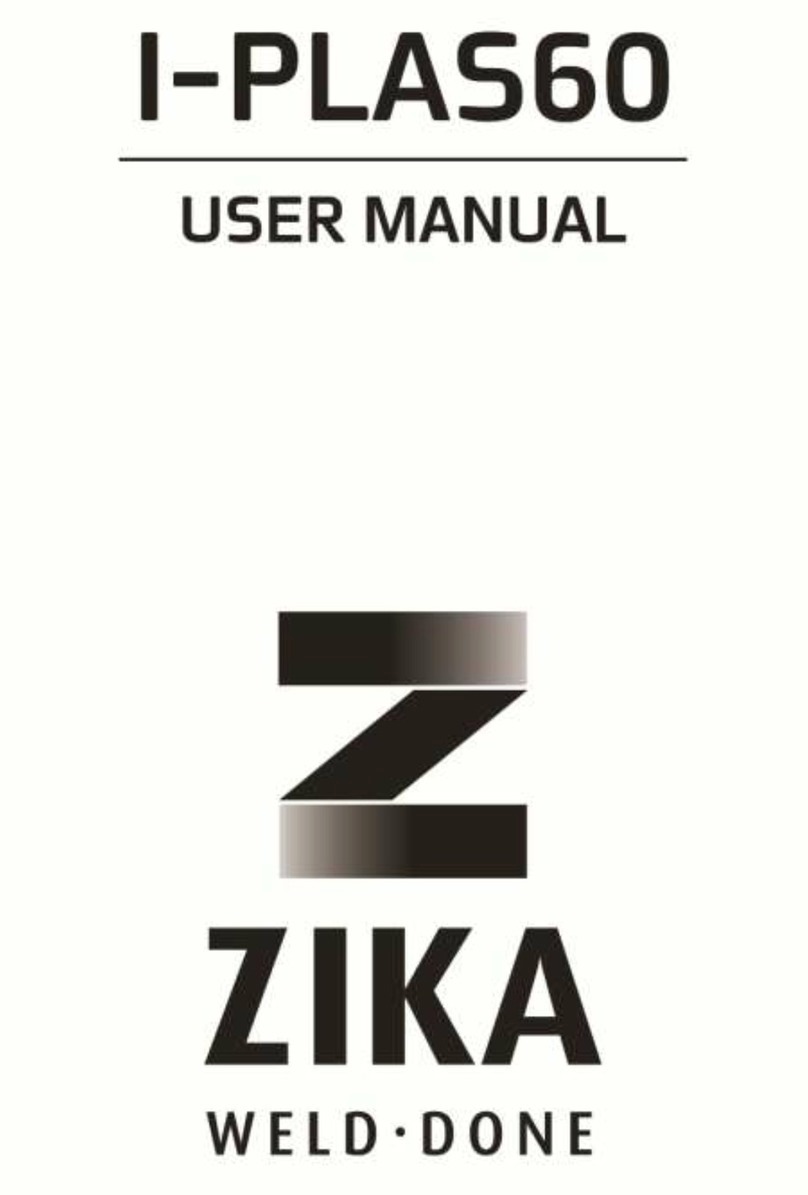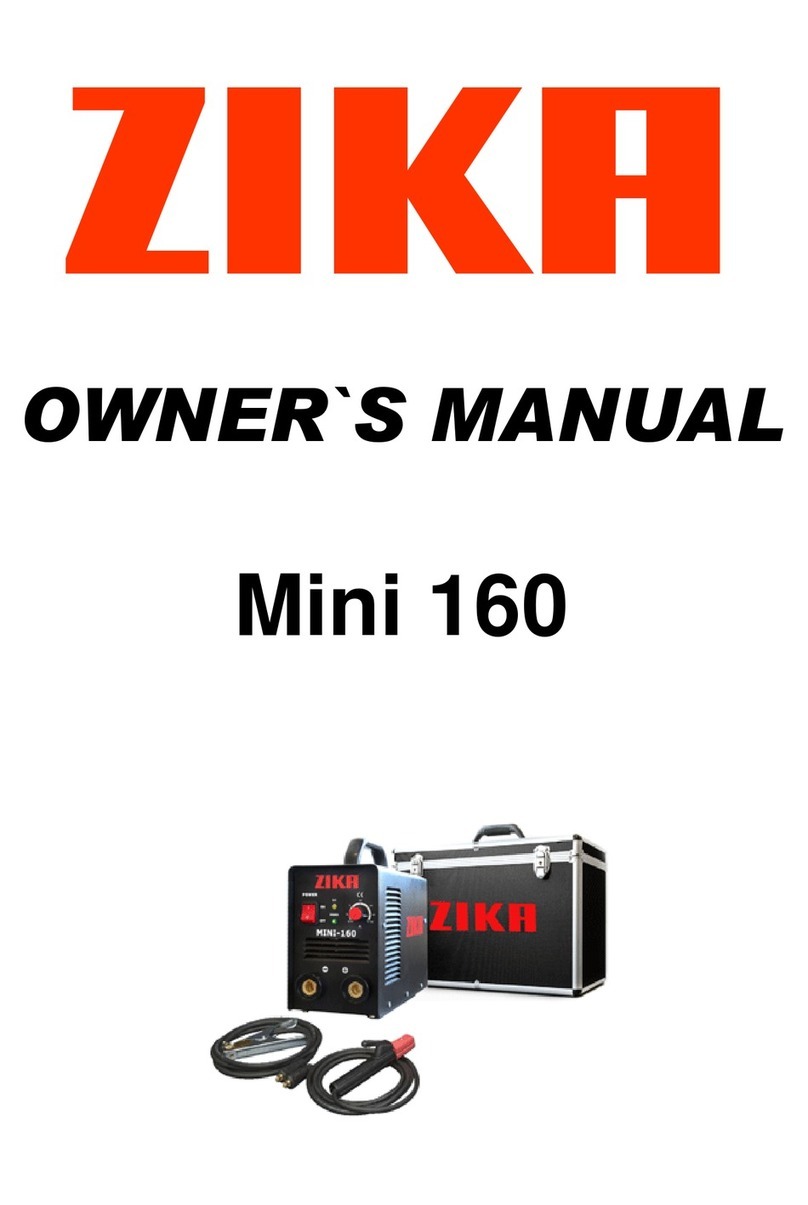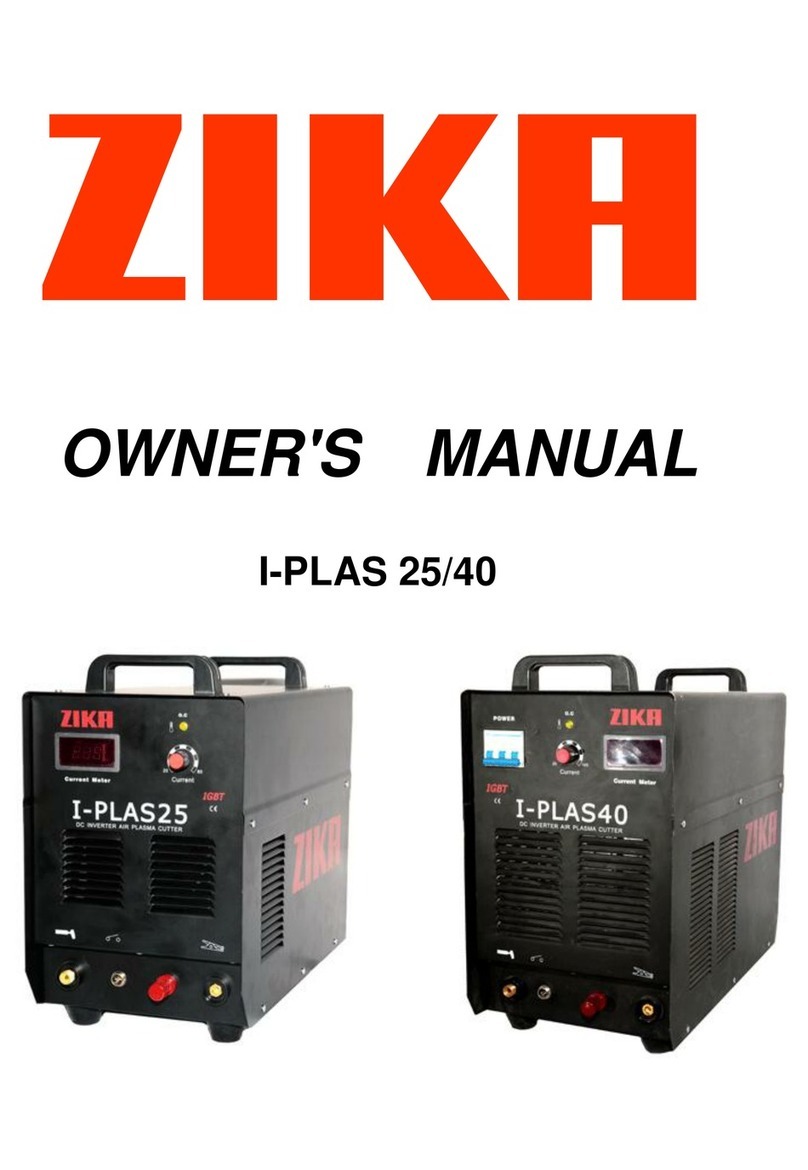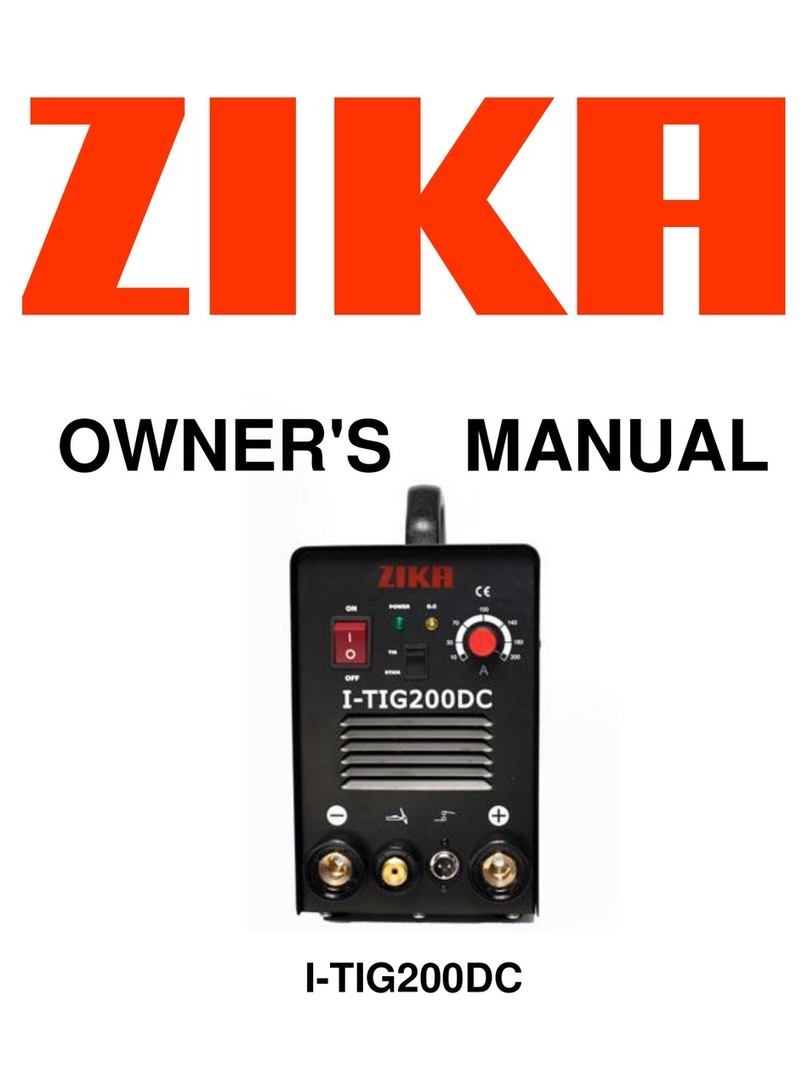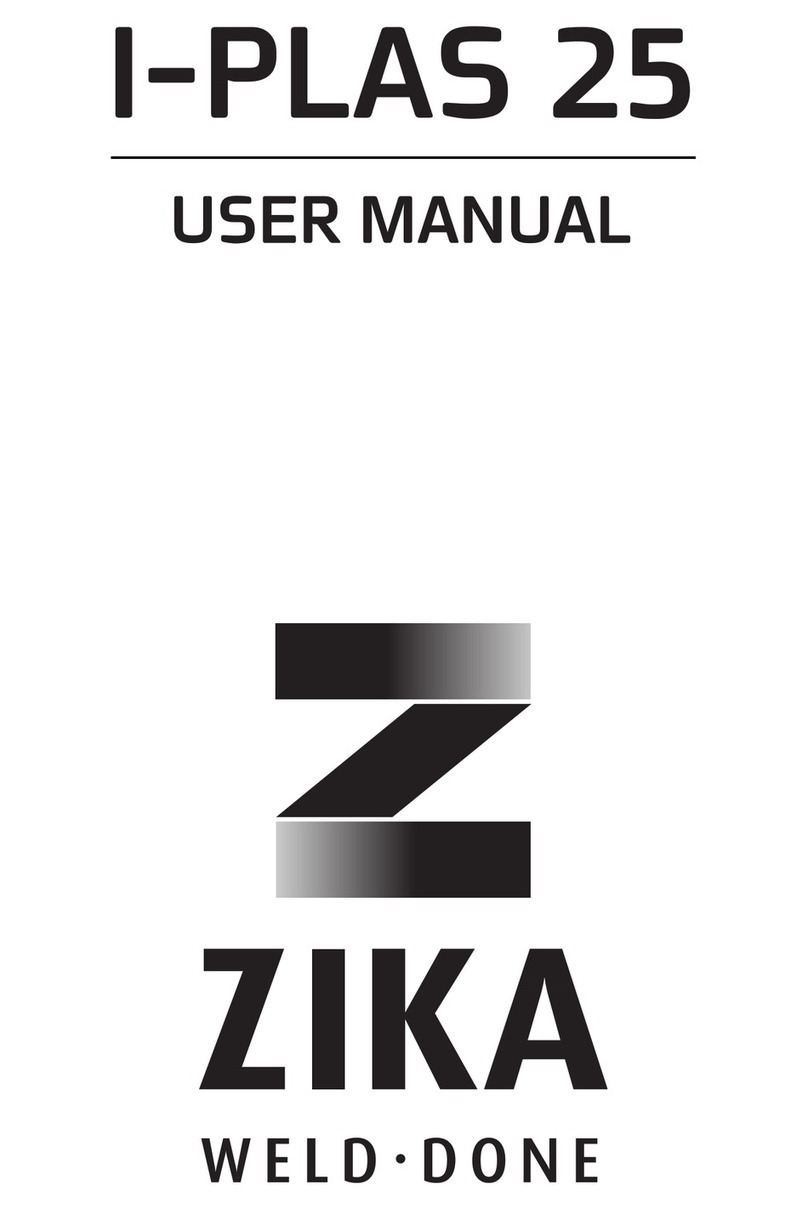OPERATORS’ MANUAL · TIG SERIES R160A SC-A5
6
4. INSTALLTION & OPERATION
To reduce voltage drop, it is suggested to use cable of bigger cross section if the output cable is relatively long.
If the torch cable is too long, the performance of this welding machine such as arc ignition will be possibly
affected due to the fact that the inner resistance of the cable will reduce the output voltage.
4.1 Connection of input cable
1) A primary power supply cable is available for this welding machine. Connect the power supply cable to the
rated input power. (Ground connection is needed for safety purpose.)
The input voltage of TIG160 /180/200 is single-phase 230V, and that of TIG250/300/400 is 3-phase 380V.
2) The primary cable should be tightly connected to the correct socket to avoid oxidization.
3) Check whether the voltage value varies in acceptable range with a multi-meter.
4.2 Connection of output cable
◆TIG: Applicable to TIG160S/TIG200S
1) Correctly connect the TIG torch according to the above drawing. Connect the gas-electric connector of the
TIG torch to the corresponding connector (2a) on the machine panel, and tighten it clockwise.
2) Connect the aviation plug on the TIG torch to the corresponding socket (2b) on the machine panel, and
tighten it clockwise.
3) Insert the quick plug on the earth cable into the “+” quick socket (2c) on the machine panel, and tighten it
clockwise. Clamp the workpiece with the earth clamp at the other end of the earth cable.
4) Tightly connect the gas hose to the gas inlet on the back panel of the machine. The gas path should include
the cylinder, gas regulator and gas hose. The joint with the hose should be tightened with a hoop to prevent
gas leakage and air mixing. Otherwise, weld bead cannot be well protected.
5) The enclosure of the machine must be grounded with a lead (cross section≥4mm2) to avoid static and
electric shock. A ground terminal marked with the symbol is located on the back panel of the machine for this
purpose.
◆MMA & TIG: Applicable to TIG180A/TIG200A/TIG180P/TIG20P/TIG300/TIG400
Refer to the above steps for output cable connection when you use the machine for TIG welding.When you use
the machine for MMA welding, Please note:
1) Two quick plugs are available for this welding machine. Insert the quick plugs into the quick sockets on the
front panel of the machine, and tighten them with an inner hexagon spanner to ensure good contact.
Otherwise, the plugs and sockets will be burned if the working time is long and the working current is high.
2) Insert the cable plug with electrode holder into the “+” socket (2c) on the front panel of the welding machine,
and tighten it clockwise. Insert the cable plug with work clamp into the “-” socket (2d) on the front panel of
the welding machine, and tighten it clockwise.
3) Generally, DCEP polarity and DCEN polarity are available in MMA.
DCEP: Connect the electrode holder to “+” output terminal, and the work clamp to “-”output terminal.






